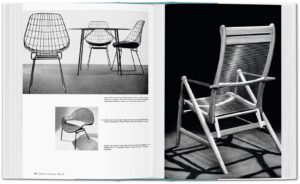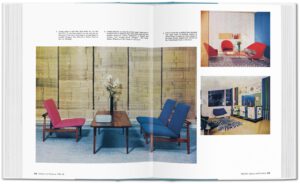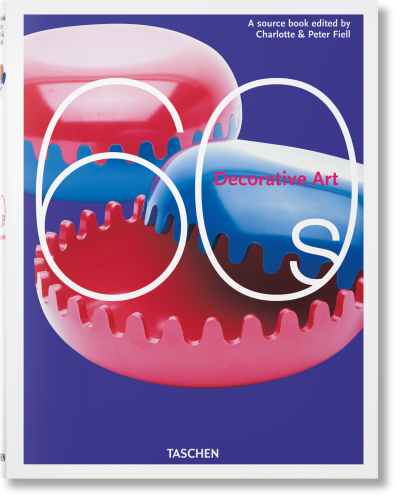Decorative Art, a British journal of design, furniture and anything related to modern interiors annually published a Studio Yearbook, beginning in 1906. Taschen now reissued the yearbooks of two decades, collected in separate volumes, here with emphasis on the 1950s and 1960s, respectively.
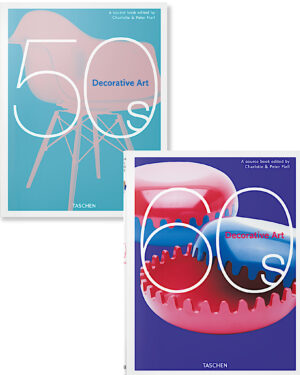 As the original vintage journals are long out of print and hard to come by (and in the 1980s, the journal folded), the two editions are much appreciated, as they amass the creative ideas and futuristic visions of the decades’ most brilliant inventors in their fields.
As the original vintage journals are long out of print and hard to come by (and in the 1980s, the journal folded), the two editions are much appreciated, as they amass the creative ideas and futuristic visions of the decades’ most brilliant inventors in their fields.
Both “source books,” and that is exactly what they are, start with a brief introduction, only to overwhelm the reader immediately with probably thousands of pictures, including shots from real homes, salesrooms, floor plans, as well as hundreds of shots of furniture details, fabrics, silver, glassware, lamps and anything you would find in a contemporary household of those decades.
Even though, rather in the newly built houses, as the focus is on highly modern, sometimes experimental blends of colors, materials, lighting and detailed room layouts.
Although the two titles represent lifestyle items, design and inventions of two different decades that were available, their focus is often on the “things to come” and visionary side, too.
Several designs or pieces of furniture planned and developed never were produced in large quantities, and remained unique prototypes.
The captions of the countless pictures may seem a bit short, at first. For example “Tin-glazed plaque painted in blues, green and orange with gold outline, motif based on Persian paintings,” or “Armchair in teak with laminated arm rests; foam-padded seat and back,” with mention of designer and manufacturer.
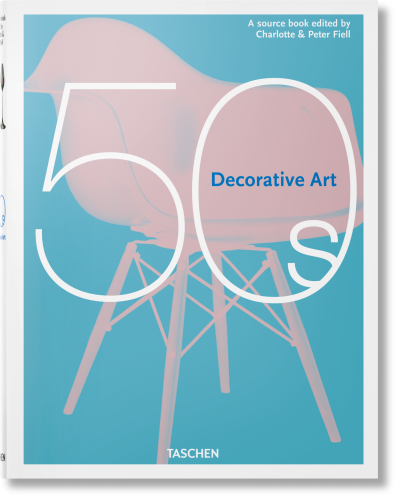 But then, longer captions or more elaborate paragraphs may easily have made the book even heavier, as the ideas and compositions in the mass of pictures available here seem to be endless.
But then, longer captions or more elaborate paragraphs may easily have made the book even heavier, as the ideas and compositions in the mass of pictures available here seem to be endless.
Comparing the two volumes, the number of full-color photographs is much higher in the 60s title, obviously manufacturers turned to color film for their products for good later.
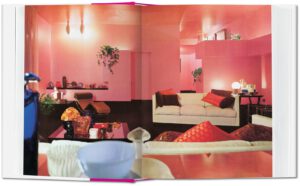 And naturally, the prominent names of architects, designers, and inventors in the volume on the 1950s most quoted are George Nelson, Charles and Ray Eames, Gio Ponti, and Hans Wegner.
And naturally, the prominent names of architects, designers, and inventors in the volume on the 1950s most quoted are George Nelson, Charles and Ray Eames, Gio Ponti, and Hans Wegner.
While the latter volume will present, among the designs of many others, works by Sottsass, Lomazzi, Paolozzi, Parisi, Sarpaneva, and of course Panton.
The editors Charlotte and Peter Fiell are outstanding writers on design history and can look back on a record of 60+ books on similar subjects. They are also lecturers, curators and among the first experts consulted by museums, exhibitions and private collectors worldwide.
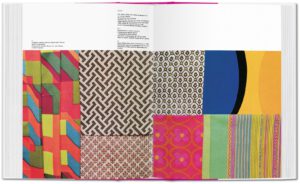 They have published several titles on design and transportation for Taschen already, and they edit the entire Decorative Art series.
They have published several titles on design and transportation for Taschen already, and they edit the entire Decorative Art series.
Both titles are 2021 reprints and come as multilingual editions (French, English, German) and with 3,3 pounds and 576 pages are rather hefty for their 7.95 x 1.18 x 10.35 inches size.
Review by Dr. A. Ebert © 2021
Charlotte & Peter Fiell. Decorative Art 50s. Taschen, 2021, 576 p., ISBN 978-3836584449
Charlotte & Peter Fiell. Decorative Art 60s. Taschen, 2021, 576 p., ISBN 978-3836584463

